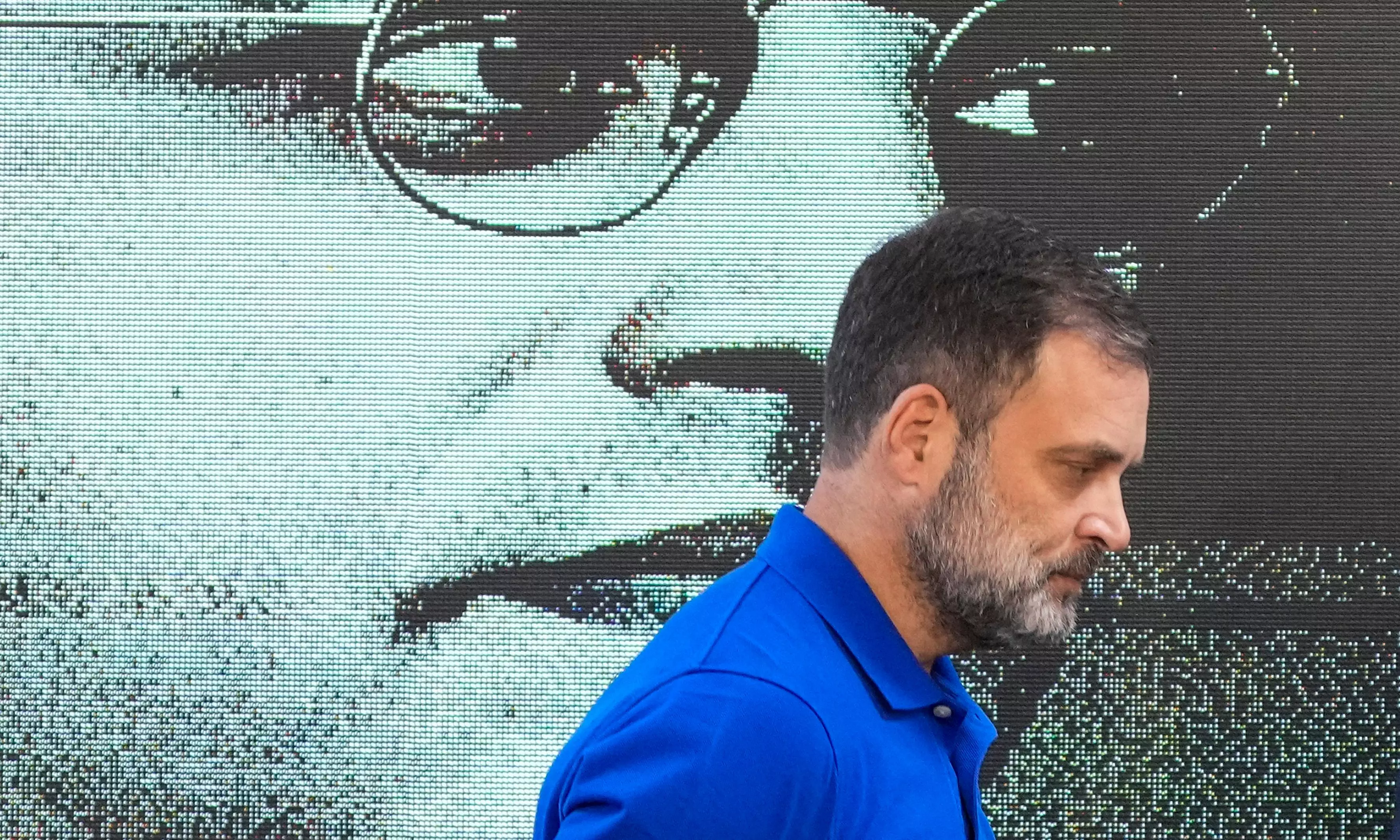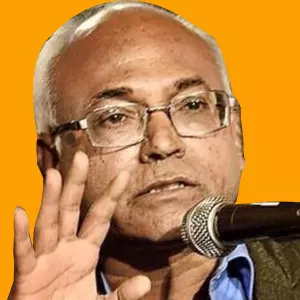
- Home
- India
- World
- Premium
- THE FEDERAL SPECIAL
- Analysis
- States
- Perspective
- Videos
- Sports
- Education
- Entertainment
- Elections
- Features
- Health
- Business
- Series
- In memoriam: Sheikh Mujibur Rahman
- Bishnoi's Men
- NEET TANGLE
- Economy Series
- Earth Day
- Kashmir’s Frozen Turbulence
- India@75
- The legend of Ramjanmabhoomi
- Liberalisation@30
- How to tame a dragon
- Celebrating biodiversity
- Farm Matters
- 50 days of solitude
- Bringing Migrants Home
- Budget 2020
- Jharkhand Votes
- The Federal Investigates
- The Federal Impact
- Vanishing Sand
- Gandhi @ 150
- Andhra Today
- Field report
- Operation Gulmarg
- Pandemic @1 Mn in India
- The Federal Year-End
- The Zero Year
- Science
- Brand studio
- Newsletter
- Elections 2024
- Events
- Home
- IndiaIndia
- World
- Analysis
- StatesStates
- PerspectivePerspective
- VideosVideos
- Sports
- Education
- Entertainment
- ElectionsElections
- Features
- Health
- BusinessBusiness
- Premium
- Loading...
Premium - Events

If Congress now remains where Nehru, Indira and Rajiv Gandhi's eras were on the caste question, it will slowly lose relevance, much like the Left parties
Ever since Rahul Gandhi took up the issue of caste census and sought to reposition the Congress on social justice, there has been a stir within the party and significant anxiety about his agenda.
Some senior Congress leaders, such as Anand Sharma, wrote to party president Mallikarjun Kharge ahead of the 2024 elections, disapproving Rahul’s proposals for a caste census and removing the 50 percent cap on reservation.
But Rahul’s election campaign centered on caste census and protection of the Constitution and reservation.
Rahul’s strategy worked
This strategy helped the party and the INDIA alliance reduce the BJP’s tally to 240. The Congress got 101 seats, establishing Rahul as a strong opposition leader.
On the issue of protecting the Constitution, there is alignment within the party. But, the party’s structure is not aligned with Rahul's ideological focus on caste census and reservation.
Also read | Another blunt talk by Mohan Bhagwat, but is he really walking the talk?
Rahul’s reform agenda — within the Congress and society — is a double-edged knife. Despite being the ruling party immediately after Independence, the Congress never pursued these reforms.
And, in the face of the RSS-BJP’s caste mobilisation, Rahul appears convinced that advancing caste reform is the only viable path for the party’s future.
Unease with agenda
In fact, Dwija caste leaders and intellectuals, both within and outside the Congress, are not willing to go with Rahul’s agenda on caste. Those Dwijas who are outside the Congress hope that the RSS-BJP, through their strategic use of Narendra Modi’s OBC claim, will protect them from the growing demand of caste census among OBCs. They think Rahul has created a crisis in their comfort zone.
They also hope that the Gujarati-Mumbai monopoly capital, largely aligned with RSS-BJP Hindutva politics, will ensure the Congress doesn’t return to power in the near future.
For Dwijas, particularly in North India, preserving caste culture is more important than addressing economic issues.
In any class-based society, wealth comes and goes. But once caste control over society is lost, it does not return. This provided socio-spiritual control over the productive masses for millennia. The RSS-BJP are using slogans like Batenge to Katenge or Ek Hain toh Safe Hain only to stop Rahul’s agenda of a caste census and the redistribution of resources based on caste population data.
Also read | Why September 2025 could be make or break for Narendra Modi
There is a catch
The Shudra upper castes are likely to align with the idea of a caste census alongside the OBC/SC/STs. In the post-Mandal era, their representation in the national bureaucratic power, media and intellectual domain has not improved.
Their earlier hope — that their land power would enable them to develop like the Dwijas in education and secure higher employment in services like IAS, IPS and IFS — has not materialised. Even the regional ruling Shudra upper castes are unable to capture Delhi’s power structures.
For the Congress, which never accepted caste-based reservations as a positive step — particularly under the Nehru family, which was not in favour of reservations — it has thrown up a leader who is willing to take a clear position on caste census and reservations.
He is now highlighting that out of every Rs 100 in financial allocation, only Rs 3 go to Dalits, Rs 4-5 go to OBCs and Rs 2-3 go to Adivasis. That is because 90 per cent of the decision-making officials belong to upper castes.
The Dwija bureaucrats view this discourse on fund allocation based on caste as deeply problematic. Rahul, an insider to the system, has opened wounds.
Also read | BJP's unity-safety call is linked to its aversion to caste census
Understanding of realities
Now, most Shudra upper castes want to get into the reservation pool because Rahul, an MP and an insider in the ruling party (UPA) for 10 years, is saying these things.
They relate it to their non-existence in the central bureaucracy and the limited allocations of funds for regional party governments headed by Shudra leaders. Rahul has taken the battle against the caste-based cultural manipulation into the headquarters.
However, Rahul seems to have understood that this cultural change can be brought within the framework of the Constitution. His promise to remove the 50 per cent cap offers hope to all Shudras, including Reddys, Marathas and Jats.
Meanwhile, the Congress Dwija leaders think that Rahul’s strategy to remove Narendra Modi from power and bring the Congress back is misguided. But they know that only he can bring the party to power.
Socialism vs caste
Rahul is in a position similar to Jawaharlal Nehru after the 1955 Avadi Congress session, where the latter proposed to adopt Democratic Socialism through a public-private mixed economy model.
He did that in the face of opposition from Morarji Desai and other right-wing leaders in the Congress. The strongest supporter of Nehru was Kamaraj Nadar, a Shudra leader and the then chief minister of Tamil Nadu.
Since Nehru was in power, he could easily overcome the opposition from within and pushed the mixed economy model.
Indira’s neo-socialism
A bigger problem was encountered by Indira Gandhi before the 1971 elections with her neo-socialist push. She proposed the abolition of Privy Purses, land reforms and bank nationalisation, with the slogan Garibi Hatao to counter ‘Indira Hatao’ by Jana Sangh.
The RSS-Jana Sangh entered into a strange alliance with socialist parties and they roped in Jayaprakash Narayan and the newly formed Congress (organisation).
Also read | Why caste census is critical to implement SC's quota-within-quota ruling
Several landlords, princes and zamindars opposed India Gandhi’s neo-socialist agenda. The newly formed Congress was also known as Reddy Congress as it was headed by K Bramhananda Reddy, a feudal lord, from Andhra Pradesh.
All the landlords and zamindars, who took a firm stand against land reforms, bank nationalisation and the axing of Privy Purses within the Congress, went with the Reddy Congress.
Emergency imposition
After the election, the same pro-princes, pro-zamindar and anti-land reform forces organised massive agitations against Indira Gandhi.
This led to the imposition of the Emergency. During the Emergency, Indira Gandhi forced the system to come to terms with the agenda of reducing class inequalities within the framework of the constitution.
She put opposition leaders in jail and muzzled the media. This had a dark side of its own. But she got some breathing time between the 1971 and 1977 elections. In 1977, she was defeated, partly due to these excesses.
The post 1977 Indira
After that defeat, she lost track of the democratic socialist path that Nehru set in and brought in forces that were not interested in socio-political change. Many of them were more interested in personal power and wealth.
The Nehru-Indira socialist agenda was influenced by the global communist-socialist environment and the class struggles being organised by the Indian communists. If that kind of negotiation with the idea of socialism by Nehru and Indira Gandhi did not take place, India’s democracy would have been in crisis. The consciousness around the Constitution and Ambedkar was very limited in those days.
Indira Gandhi could include the words ‘Socialism’ and ‘Secularism’ in the preamble only during the Emergency. Now the Supreme Court fortunately upheld the validity of these concepts within the larger welfare-oriented socio-economic framework of the constitution.
Also read | The tedious lightness of quota reform
Proletarian dictatorship
The RSS-Jana Sangh was for Varna Dharma dictatorship and the communists were for proletarian dictatorship; both were fundamentally opposed to the Constitution. Till the mid-1990s, the RSS-BJP forces were not convinced that their cultural nationalism would be achieved within the framework of this Constitution.
From the 1990s Mandal era to the 2014 election, a fundamental change occurred in the political realm.
The RSS-BJP changed its position on reservations and Modi was proposed as the prime ministerial candidate within this new ideological framework. They mobilised the lower OBCs into their fold and won the elections.
Annihilation of caste
The caste-based cultural and economic inequalities that were not allowing the system to move towards a path of socio-economic equality were a blind spot during the Nehru, Indira and Rajiv Gandhi era.
Ambedkar’s idea of the annihilation of caste through the same Constitution was never examined by any post-Ambedkar political force — liberal, Left or Right. But after Mandal, Ambedkar transformed from a “False God” of Arun Shourie to the worship-worthy god of Modi’s BJP.
If the Congress of Rahul’s time remains where Nehru, Indira Gandhi and Rajiv Gandhi’s were on caste question, it will slowly disappear from the national scene, much like the communist parties are in the process now.
Rahul woke up in this political environment and took up an anti-caste ideological position, which has shown some results in the 2024 elections, even though the majority of the party was not aligned with his ideology.
OBCs in post Mandal India
What the Congress Dwija leaders have not understood, Rahul has. Today, the OBCs do not operate with the same pre-Mandal consciousness. There is a new caste identity consciousness in a transformative mode.
In this mode caste culture among the productive castes exists in form but not in content. It is now evolving into a collective identity — OBC. This transformation facilitates a collective mobilisation process.
The RSS leaders understood this better than the Congress, as they have an extensive grassroots network. But the Congress has no grassroots ideological feedback mechanism, as it has no ideologically committed mass organisation to give such insights.
Ambedkar and Congress
But the RSS design is to use the OBC vote in order to sustain the Sanatan Dharma, which is bound by the varna system. It does not want to abolish caste but to modernise and solidify it.
Rahul’s discourse has anti-caste, egalitarian, democratic socialist content. For this change to materialise, the Congress Dwija leadership should be fully aligned with a futuristic vision.
In the post-Mandal context, it lies on a continuum of Nehru and Indira Gandhi’s class-based mobilisation with an ideology of democratic socialism by including caste in the changed context.
Rahul’s anti-caste electoral discourse and mobilisation certainly need to include Ambedkar in their pantheon of Gandhi, Nehru and Sardar Patel. For the Congress, there is no other way to again come to power.
(The Federal seeks to present views and opinions from all sides of the spectrum. The information, ideas or opinions in the articles are of the author and do not necessarily reflect the views of The Federal)


